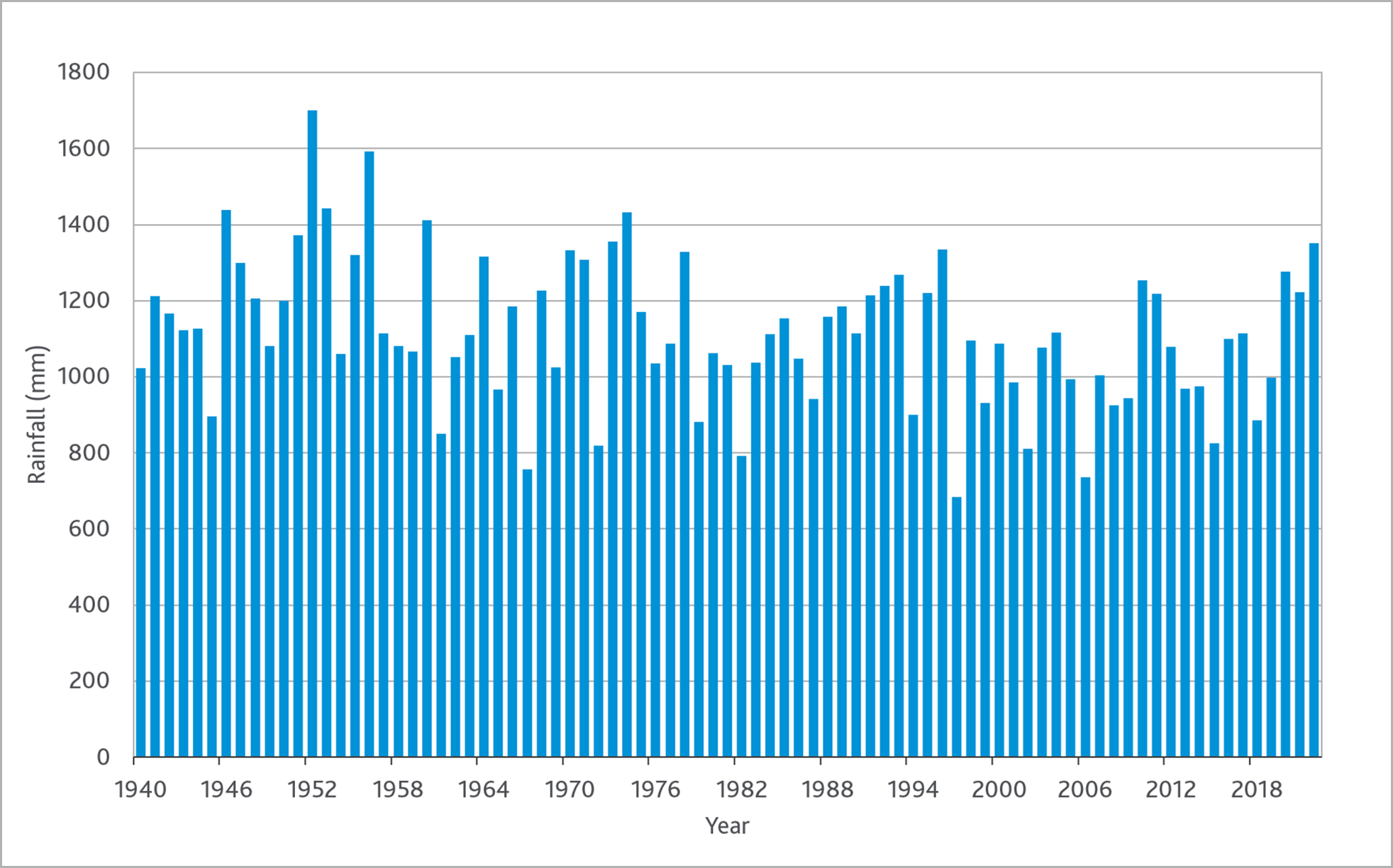Upper Yarra Reservoir is filled by rainfall received by the surrounding catchment, and also stores water transferred from Thomson Reservoir.
The water from Upper Yarra Reservoir is transferred to Silvan Reservoir, and can also supply townships along the way. From Silvan, water can be distributed throughout metropolitan Melbourne.
Key facts
The dam at Upper Yarra Reservoir is a rolled earthfill and rockfill embankment, and was completed in 1957.
- Catchment area: 33,670 hectares
- Surface area: 750 hectares
- Total capacity: 200,579 megalitres
- Dam height: 90 metres
- Dam length: 610 metres
Water catchment protection and access
Upper Yarra Reservoir is an on-stream reservoir, filled by rivers or rainfall that runs off the nearby forested water catchments. There is:
- no entry into the protected water supply catchment, with offenders subject to prosecution under the Water Act 1989 (Vic)
- no entry into water supply catchment buffer area below reservoir, except for access to Reservoir Park, managed by Parks Victoria
- entry permitted for vehicles on public roads: Warburton Woods Point (Reefton Spur), Nine Mile Rd, Toorongo Rd and 40 Mile Break/Road 20.
Melbourne Water continually reviews our protected catchments to determine if more areas can be opened to the public. While this would allow more people to enjoy Victoria’s vast natural spaces, it must be balanced with protecting our precious drinking water for the safety of our community.
Rainfall over the years
View highlights from our historical rainfall data for Upper Yarra Reservoir, including annual rainfall, monthly averages, and the wettest and driest years by month.
Live rainfall and water storage data
Get the latest information on each of our 10 major reservoirs, including daily water storage levels and hourly rainfall and river level data.
Annual rainfall at Upper Yarra (1940-2022)
Monthly rainfall records (mm)
Last updated: January 2023
| Month | Wettest | Driest | Average |
|---|---|---|---|
| January | 184.2 (1956) | 3.2 (1990) | 63.1 |
| February | 233.9 (1973) | 0.4 (1991) | 53.8 |
| March | 190.0 (1950) | 0.8 (1951) | 62.9 |
| April | 200.2 (1951) | 16.5 (1963) | 80.7 |
| May | 256.0 (1960) | 16.4 (2001) | 99.8 |
| June | 288.5 (1952) | 23.4 (1965) | 103.1 |
| July | 228.6 (1947) | 28.8 (1994) | 112.1 |
| August | 223.2 (1976) | 24.8 (1982) | 126.8 |
| September | 222.6 (1992) | 45.8 (1981) | 119.2 |
| October | 251.2 (1953) | 19.6 (2015) | 109.4 |
| November | 210.1 (1960) | 23.6 (1982) | 100.0 |
| December | 198.9 (1955) | 4.1 (1972) | 85.4 |
| Annual total | 1699.9 (1952) | 683.6 (1997) | 1116.1 |
You may also like...
Our water supply system
Melbourne has some of the highest-quality drinking water in the world. Learn how it makes its long journey to your tap.






